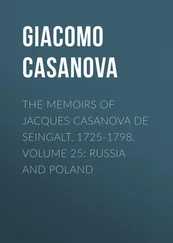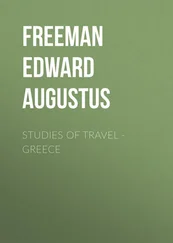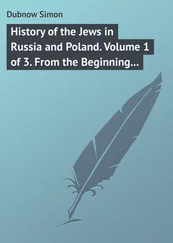John Stephens - Incidents of Travel in Greece, Turkey, Russia, and Poland, Vol. 2 (of 2)
Здесь есть возможность читать онлайн «John Stephens - Incidents of Travel in Greece, Turkey, Russia, and Poland, Vol. 2 (of 2)» весь текст электронной книги совершенно бесплатно (целиком полную версию без сокращений). В некоторых случаях можно слушать аудио, скачать через торрент в формате fb2 и присутствует краткое содержание. Год выпуска: 1838, Жанр: Путешествия и география, на английском языке. Описание произведения, (предисловие) а так же отзывы посетителей доступны на портале библиотеки ЛибКат.
- Название:Incidents of Travel in Greece, Turkey, Russia, and Poland, Vol. 2 (of 2)
- Автор:
- Жанр:
- Год:1838
- ISBN:нет данных
- Рейтинг книги:4 / 5. Голосов: 1
-
Избранное:Добавить в избранное
- Отзывы:
-
Ваша оценка:
- 80
- 1
- 2
- 3
- 4
- 5
Incidents of Travel in Greece, Turkey, Russia, and Poland, Vol. 2 (of 2): краткое содержание, описание и аннотация
Предлагаем к чтению аннотацию, описание, краткое содержание или предисловие (зависит от того, что написал сам автор книги «Incidents of Travel in Greece, Turkey, Russia, and Poland, Vol. 2 (of 2)»). Если вы не нашли необходимую информацию о книге — напишите в комментариях, мы постараемся отыскать её.
Incidents of Travel in Greece, Turkey, Russia, and Poland, Vol. 2 (of 2) — читать онлайн бесплатно полную книгу (весь текст) целиком
Ниже представлен текст книги, разбитый по страницам. Система сохранения места последней прочитанной страницы, позволяет с удобством читать онлайн бесплатно книгу «Incidents of Travel in Greece, Turkey, Russia, and Poland, Vol. 2 (of 2)», без необходимости каждый раз заново искать на чём Вы остановились. Поставьте закладку, и сможете в любой момент перейти на страницу, на которой закончили чтение.
Интервал:
Закладка:
A sarcophagus or coffin of massive silver, standing on an elevated platform, ornamented in bas-relief, representing scenes of battles with the Swedes, contains his relics; a rich ermine lies upon the coffin, and above is a silver canopy. On each side is a warrior clothed in armour, with his helmet, breastplate, shield, and spear also of massive silver. The altar rises thirty feet in height, of solid silver, with groups of military figures and trophies of warriors, also of silver, as large as life; and over it hangs a golden lamp, with a magnificent candelabrum of silver, together with a vessel of curious workmanship holding the bones of several holy men, the whole of extraordinary magnificence and costliness of material, upward of four thousand pounds weight of silver having been used in the construction of the chapel and shrine. The dead sleep the same whether in silver coffins or in the bare earth, but the stately character of the church, dimly lighted, and the splendour and richness of the material, gave a peculiar solemnity to the tomb of the warrior saint.
Leaving the churches, I strolled through the cloisters of the monastery and entered the great cemetery. There, as in the great cemetery of Père la Chaise at Paris, all that respect, and love, and affection can do to honour the memory of the dead, and all that vanity and folly can do to ridicule it, have been accomplished. There are seen epitaphs of affecting brevity and elaborate amplification; every design, every device, figure, emblem, and decoration; every species of material, from native granite to Carrara marble and pure gold. Among the simpler tombs of poets, warriors, and statesmen, a monument of the most gigantic proportions is erected to snatch from oblivion the name of a rich Russian merchant. The base is a solid cubic block of the most superb marble, on which is a solid pedestal of black marble ten feet square, bearing a sarcophagus fourteen feet high, and of most elegant proportions, surmounted by a gold cross twenty feet in height. At each of the four corners is a colossal candelabrum of cast iron, with entwining serpents of bronze gilded. The ground alone cost a thousand pounds, and the whole monument about twenty thousand dollars. Near the centre of this asylum of the dead, a tetrastyle Ionic temple of the purest white marble records the virtues of an interesting lady, the Countess of Potemkin, and alto relievos of the most exquisite execution on three sides of the temple tell the melancholy story of a mother snatched from three lovely children. The countess, prophetically conscious of her approaching fate, is looking up calmly and majestically to the figure of religion, and resting with confidence her left hand on the symbol of Christianity. In front are the inscription and arms of the family in solid gold.
But what are the Russian dead to me? The granite and marble monument of the merchant is a conglomeration of hides, hemp, and tallow; a man may be excused if he linger a moment at the tomb of an interesting woman, a mother cut off in her prime; but melancholy is infectious, and induces drowsiness and closing of the book.
In consideration for my valet, at the grand portal I took a drosky, rolled over the wooden pavement of the Newski Perspective, and, with hardly motion enough to disturb my revery, was set down at the door of my hotel. My Pole was waiting to dine with me, and roused me from my dreams of the dead to recount his dreams of the living. All day he had sat at his window, and a few straggling glances from the lady opposite had abundantly rewarded him, and given him great spirits for his evening's promenade on the Boulevards. I declined accompanying him, and he went alone, and returned in the evening almost in raptures. We strolled an hour by the twilight, and retired early.
It will hardly be believed, but early the next morning he came to my room with a letter on fine pink paper addressed to his fair enslaver. The reader may remember that this was not the first time I had been made a confidant in an affaire du cœur. To be sure, the missionary at Smyrna turned out to be crazy; and on this point, at least, my Pole was a little touched; nevertheless, I listened to his epistle. It was the regular oldfashioned document, full of hanging, shooting, drowning, and other extravagances. He sealed it with an amatory device, and, calling up a servant in his confidence, told him to carry it over, and then took his place in my window to watch the result. In the mean time, finding it impossible to dislodge him, and that I could not count upon him to accompany me on my visits to the palaces as he had promised, I went to the Hermitage alone. The Great and Little Hermitages are connected with the Winter Palace and with each other by covered galleries, and the theatre is connected with the two Hermitages by means of another great arch thrown over a canal, so that the whole present a continued line of imperial palaces, unequalled in extent in any part of Europe, measuring one thousand five hundred and ninety-six feet, or one third of an English mile. If I were to select a building designed to realize the most extravagant notions of grandeur and luxury, it would be the gorgeous palace known under the modest name of the Hermitage. I shall not attempt any description of the interior of this splendid edifice, but confine myself to a brief enumeration of its contents. I ascended by a spacious staircase to the anteroom, where I gave, or, rather, where my cane was demanded by the footman, and proceeded through a suite of magnificent rooms, every one surpassing the last, and richer in objects of the fine arts, science, and literature; embellished throughout by a profusion of the most splendid ornaments and furniture, and remarkable for beauty of proportion and variety of design. In rooms and galleries appropriated to the separate schools and masters are upward of thirteen hundred paintings by Raphael, Titian, Guido, Andrea del Sarto, Luca Giordano, the Caracci, Perugino, Corregio, and Leonardi da Vinci; here is also the best collection in existence, of pictures by Wouvermans and Teniers, with some of the masterpieces of Rubens and Vandyck, of the French Claude, Poussin, and Vernet. The celebrated Houghton collection is here, with a gallery of paintings of the Spanish schools, many of them Murillos. In one room is a superb vase of Siberian jasper, of a lilac colour, five feet high, and of exquisite form and polish; in another are two magnificent candelabras, said to be valued at two hundred and twenty thousand rubles, or about fifty thousand dollars; I must mention also the great musical clock, representing an antique Grecian temple, and containing within a combination of instruments, having the power of two orchestras, which accompany each other; two golden tripods, seven feet high, supporting the gold salvers on which salt and bread were exhibited to the Emperor Alexander on his triumphal return from Paris, as emblems of wisdom and plenty, a large musical and magical secretary, which opens spontaneously in a hundred directions at the sound of music, purchased by the late emperor for eight hundred guineas; a room surrounded with books, some of which were originals, placed there by Catharine for the use of the domestics, as she said, to keep the devil out of their heads; a saloon containing the largest collection of engravings and books of engravings in Europe, amounting to upward of thirty thousand; a library of upward of one hundred and ten thousand volumes; an extensive cabinet of medals, and another of gems and pastes; a jewel-cabinet, containing the rich ornaments which have served for the toilettes of succeeding empresses, innumerable precious stones and pearls, many of extraordinary magnitude; a superb collection of antiques and cameos, amounting to upward of fifteen thousand, the cameos alone affording employment for days. In one room are curious works in ivory and fishbones, by the inhabitants of Archangel, who are skilled in that species of workmanship; and in another is the celebrated clock, known by the name of L'Horloge du Paon. It is enclosed in a large glass case ten feet high, being the trunk of a golden tree, with its branches and leaves all of gold. On the top of the trunk sits a peacock, which, when the chimes begin, expands its brilliant tail, while an owl rolls its eyes with its own peculiar stare, and, instead of a bell striking the hours, a golden cock flaps his wings and crows. The clock is now out of order, and the machinery is so complicated that no artist has hitherto been able to repair it.
Читать дальшеИнтервал:
Закладка:
Похожие книги на «Incidents of Travel in Greece, Turkey, Russia, and Poland, Vol. 2 (of 2)»
Представляем Вашему вниманию похожие книги на «Incidents of Travel in Greece, Turkey, Russia, and Poland, Vol. 2 (of 2)» списком для выбора. Мы отобрали схожую по названию и смыслу литературу в надежде предоставить читателям больше вариантов отыскать новые, интересные, ещё непрочитанные произведения.
Обсуждение, отзывы о книге «Incidents of Travel in Greece, Turkey, Russia, and Poland, Vol. 2 (of 2)» и просто собственные мнения читателей. Оставьте ваши комментарии, напишите, что Вы думаете о произведении, его смысле или главных героях. Укажите что конкретно понравилось, а что нет, и почему Вы так считаете.







![William Frith - John Leech, His Life and Work. Vol. 1 [of 2]](/books/747171/william-frith-john-leech-his-life-and-work-vol-thumb.webp)

![William Frith - John Leech, His Life and Work, Vol. 2 [of 2]](/books/748201/william-frith-john-leech-his-life-and-work-vol-thumb.webp)


